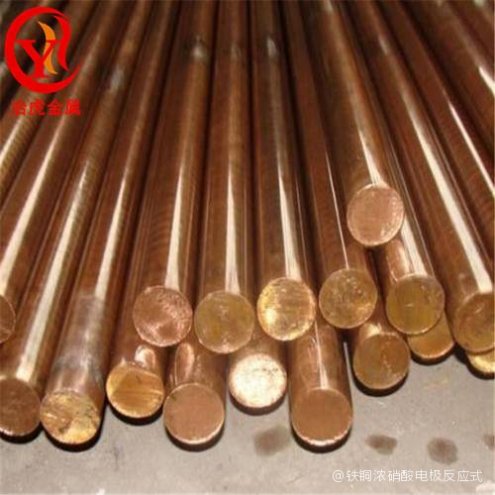铁铜浓硝酸电极反应式!铁铜浓硝酸原电池电极
铁铜浓硝酸电极反应式!铁铜浓硝酸原电池电极反应式书写「干货」
最近有很多热心网友都十分关心铁铜浓硝酸电极反应式!铁铜浓硝酸原电池电极反应式书写「干货」这个问题。还有一部分人想了解铁铜浓硝酸原电池电极反应式书写。对此,和记百科小编「感情空窗」收集了相关的教程,希望能给你带来帮助。
铁铜浓硝酸电极反应式

铁铜浓硝酸电极反应式Cu+4HNO3=Cu(NO3)2+2NO2↑+2H2O,其中负极为Cu-2e-=Cu2+,正极为2H+ + NO3-+e-= NO2↑+H2O。铁与浓硝酸反应,需要经过加热。反应刚开始时,会生成硝酸铁、二氧化氮和水。随着加入浓硝酸中的铁不断增加,浓硝酸会完全反应。之后,铁会与硝酸铁反应,生成硝酸亚铁。
铜与浓硝酸反应,不需要加热。反应刚开始时,会生成硝酸铜、二氧化氮和水。随着反应的进行,浓硝酸中硝酸的含量下降,浓硝酸变为稀硝酸,铜会与稀硝酸反应,生成硝酸铜、一氧化氮和水。
铁铜浓硝酸原电池电极反应式书写
铁铜浓硝酸原电池,也称为丹宁-卡涅尔电池,是一种原电池,即化学反应直接产生电能的装置。它的电极反应式为:
Fe(s) + Cu2+(aq) → Fe2+(aq) + Cu(s)
根据反应式,铁电极上的Fe(s)被氧化成Fe2+(aq),同时硫酸铜溶液中的Cu2+(aq)被还原成Cu(s)。这个反应自发跑,产生电能。由于它是个原电池,不可充电,一旦反应结束,电池就会失去电能,不能再使用。
这样的反应可以通过自我波动来维持:当铁电极氧化成Fe2+(aq)时,Fe2+(aq)离子很容易和硫酸根离子(SO42-)结合,形成FeSO4(s)沉淀,这样就减少了溶液中Fe2+(aq)的浓度,减缓铁电极的氧化过程;当Cu2+(aq)被还原成Cu(s)时,Cu(s)很容易和硝酸根离子(NO3-)结合,形成Cu(NO3)2(s)沉淀,这样就减少了溶液中Cu2+(aq)的浓度,减缓铜电极的还原过程。
这样的原电池具有一些缺点。首先,硫酸铜溶液的浓度会逐渐降低,铜极上积累的沉淀也会减少,这样就使反应速率变慢。其次,铁极氧化产生的Fe2+(aq)和硫酸根离子结合形成的沉淀会不断积累在电极上,形成铁电极沉积层,使电极极化效应加大,反应不再自发进行。
铁铜浓硝酸原电池电极反应式的书写让我们了解了这个电池的基本原理和运行机制,也让我们了解到原电池存在的一些问题。不过,这并不妨碍我们利用这个电池产生电能,它在工农业生产中得到了广泛应用,是化学能转化成电能的一种重要装置。
【英文介绍/For English】:
The iron-copper concentrated nitric acid electrode reaction formula Cu+4HNO3=Cu(NO3)2+2NO2↑+2H2O, in which the negative electrode is Cu-2e-=Cu2+, and the positive electrode is 2H+ + NO3-+e-= NO2↑+H2O. The reaction of iron with concentrated nitric acid requires heating. At the beginning of the reaction, iron nitrate, nitrogen dioxide and water are formed. As the iron added to the concentrated nitric acid increases, the concentrated nitric acid will react completely. The iron then reacts with ferric nitrate to form ferrous nitrate.
Copper reacts with concentrated nitric acid without heating. At the beginning of the reaction, copper nitrate, nitrogen dioxide and water are formed. As the reaction progresses, the content of nitric acid in concentrated nitric acid decreases, and concentrated nitric acid becomes dilute nitric acid, and copper reacts with dilute nitric acid to generate copper nitrate, nitric oxide and water.
【相关文章】
★ 种植花椒的条件






